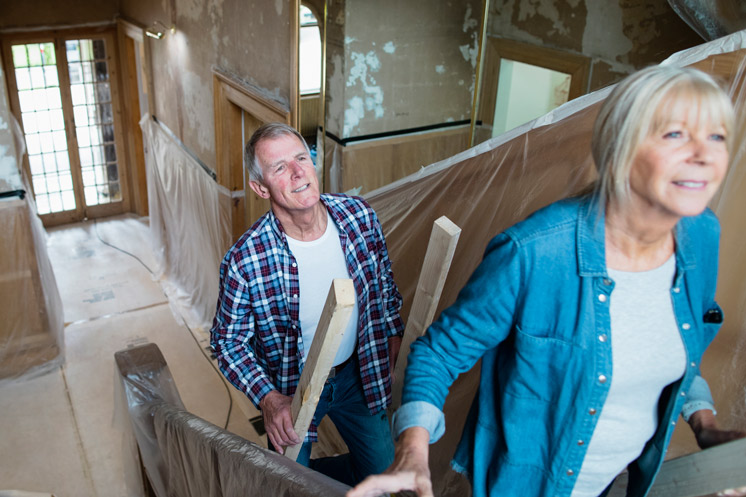Are you, like many Canadians, planning to renovate your home or cottage?
If so, you should keep your receipts in case you ever need to support the cost base of your property. Generally, Canadians have not been required to report the cost base of a principal residence that is sold on their tax return. But that changed a few years ago. It’s a good idea to collect documentation that supports the cost of your properties, especially if you have more than one property. The property with the largest gain can shift over time depending on market conditions. If you haven’t kept receipts to support the cost of the property with the largest gain, you also may not be able to maximize the use of the principal residence exemption.
Requirement to report sale
When Canadians sell their home, generally they are aware that the capital gain realized is not subject to tax if the residence has been their principal residence for the whole time that it was owned. The principal residence exemption eliminates the gain – however, starting in 2016, the CRA requires that the sale of a principal residence must be reported, even if the principal residence exemption can shelter the full amount of the gain. This means that if you miss reporting the sale of your home, you could be exposed to a penalty of up to $8,000 even with no tax owing!
To claim the principal residence exemption, the taxpayer will need to report:
- the proceeds of the sale,
- the cost of the property,
- any related selling costs,
- the years of ownership, and
- the number of years in which the taxpayer elects to treat the residence as their principal residence on Form T2091.
Therefore, it’s important to keep documentation that supports the cost of the property which would include the original price paid, plus the cost of any renovations made to the property during the time that you owned the residence.
What may come as a surprise is that not every disposition is a true sale. When you start to rent out a property, you are considered to have changed the use of the property from personal to business which is also a disposition for tax purposes. When the use of the property changes in a given year, you are considered to have sold your home at its fair market value which must also be reported.
Home Improvements or Repairs?
Whether the cost of the renovation can be added to the cost of the property will depend on whether the costs incurred are for a capital improvement or a repair.
- Repairs including general maintenance costs such as painting, landscaping, repaving the driveway or replacing broken appliances or light fixtures and such costs cannot be included in the capital cost of the property.
- Improvements that improve the property beyond its previous condition and have a long-lasting benefit such as replacing the windows, adding a new roof, upgrading the flooring in your house or adding a garage are included in the cost of the property.
It is important to keep receipts and other documentation as proof that improvements were made to your property. If you do the work yourself, it is important to keep track of the cost of material, but the cost of your own labour cannot be added to the cost of the property.
What if I have more than one property?
A family can only claim one property as their principal residence.
A residence can be claimed as the principal residence even if the family only lives in it at some point during the year. Cottages can therefore qualify. However, to optimize the principal residence exemption, Canadians will want to claim the principal residence exemption for the property with the largest average gain per year of ownership. With fluctuating market conditions and varying length of ownership, the residence with the larger average gain per year may switch over time. If you haven’t kept documentation to support the cost of both properties, you will not have support for the price that you really paid for a property. As such, the gain that you report for tax purposes will be larger than the gain you actually realized.
For example:
- A family purchases a home for $400,000 and a cottage for $200,000 at the same time. The family spends $250,000 renovating the cottage but they don’t keep any receipts.
- It is now time to sell the properties which are both worth $500,000. Ideally, the principal residence exemption would be used to shelter the $100,000 gain on the sale of the home and the family would pay tax on the gain on the cottage of $50,000.
- However, without proper receipts, the principal residence exemption would likely be used to shelter the $300,000 gain on the sale of the cottage and the family would pay tax on the gain of $100,000 realized on the sale of the house.
- Consequently, not keeping receipts resulted in a larger tax bill for this family, because they paid tax on $100,000 (gain on the house) instead of tax $50,000 (gain on the cottage).
It is important to anticipate what the tax consequences are when you sell a property or change the use of a property. Remember to keep track of the costs related to all your properties. If you don’t, you may not be able to provide proof for the cost you actually paid for the property when you are required to report that disposition. This could also prevent you from taking full advantage of the principal residence exemption. Speak to your IG Consultant to learn more about how the sale of your property can impact your IG Living Plan*.
*To learn more about the IG Living Plan, click here.
